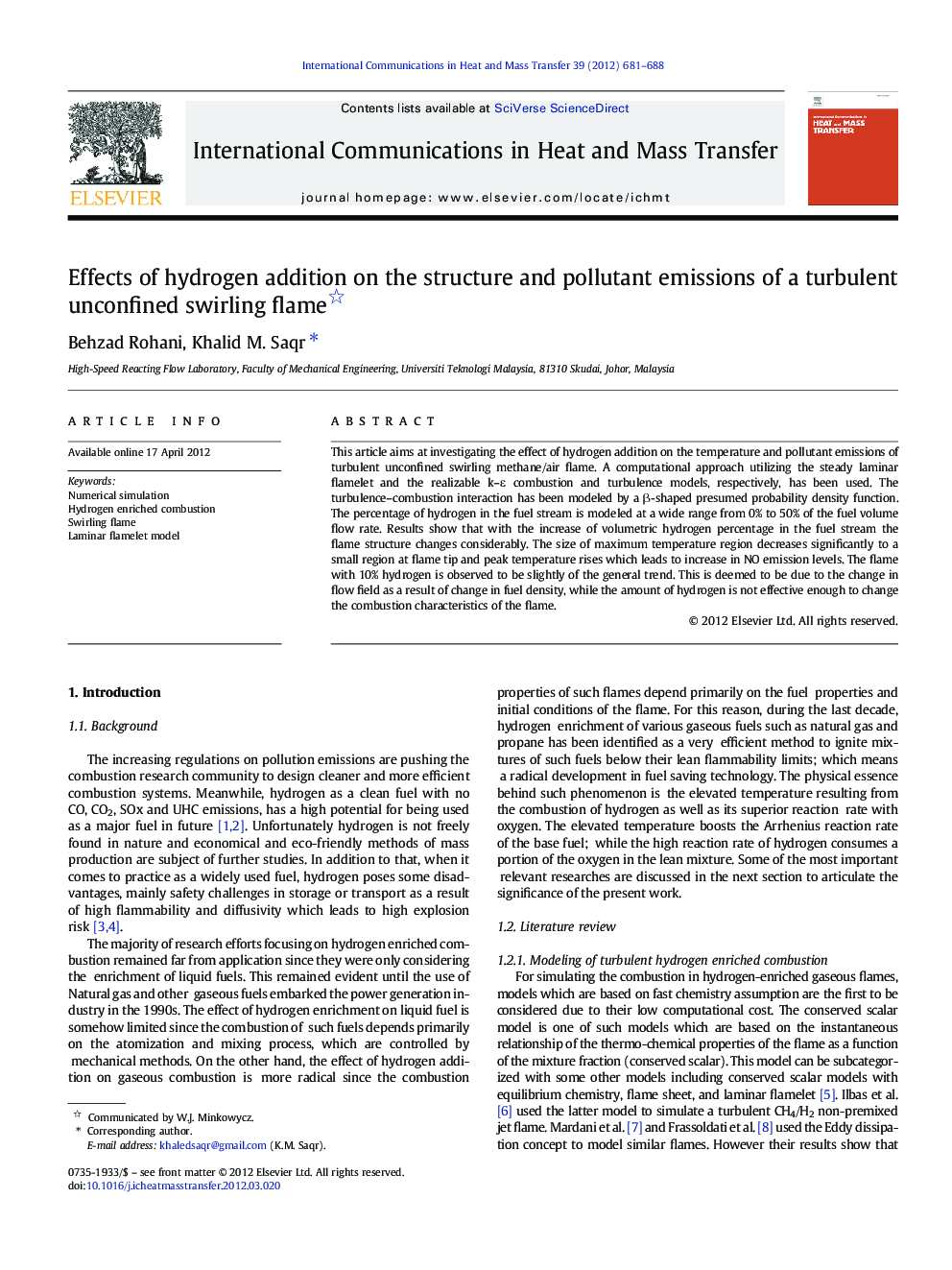| کد مقاله | کد نشریه | سال انتشار | مقاله انگلیسی | نسخه تمام متن |
|---|---|---|---|---|
| 653761 | 885214 | 2012 | 8 صفحه PDF | دانلود رایگان |

This article aims at investigating the effect of hydrogen addition on the temperature and pollutant emissions of turbulent unconfined swirling methane/air flame. A computational approach utilizing the steady laminar flamelet and the realizable k–ε combustion and turbulence models, respectively, has been used. The turbulence–combustion interaction has been modeled by a β-shaped presumed probability density function. The percentage of hydrogen in the fuel stream is modeled at a wide range from 0% to 50% of the fuel volume flow rate. Results show that with the increase of volumetric hydrogen percentage in the fuel stream the flame structure changes considerably. The size of maximum temperature region decreases significantly to a small region at flame tip and peak temperature rises which leads to increase in NO emission levels. The flame with 10% hydrogen is observed to be slightly of the general trend. This is deemed to be due to the change in flow field as a result of change in fuel density, while the amount of hydrogen is not effective enough to change the combustion characteristics of the flame.
Journal: International Communications in Heat and Mass Transfer - Volume 39, Issue 5, May 2012, Pages 681–688